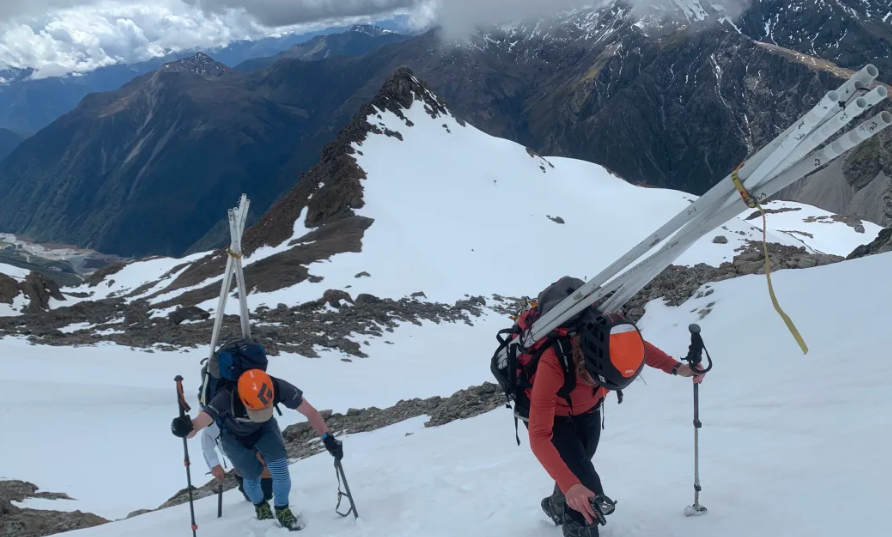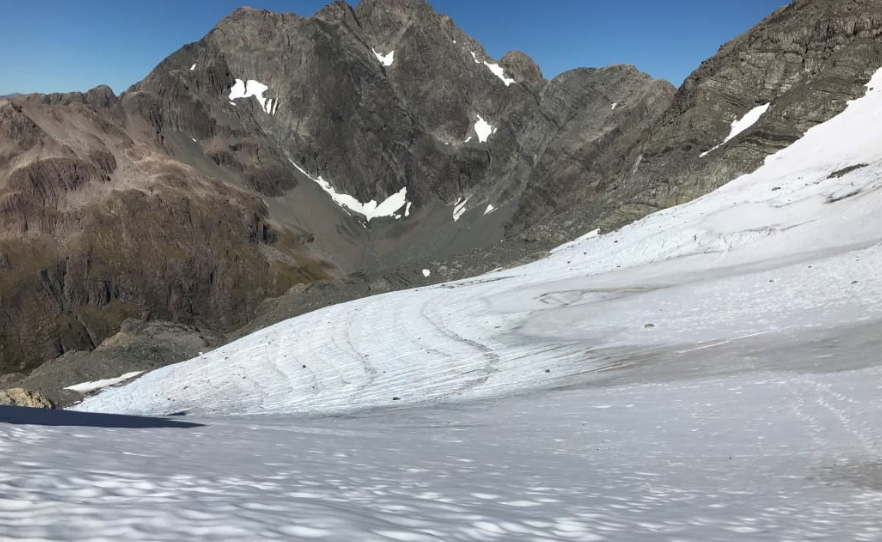
A New Zealand glacier expert sounding the alarm on climate change feels like she is yelling into the void as yet another study shows our glaciers are rapidly shrinking.
The grim news - published in scientific journal Nature today - showed glaciers were retreating worldwide at an increasing pace, with New Zealand's ranking third highest in percentage of glacial mass loss since the start of the 21st century.
Researchers analysing glacier data sets from across the globe between 2000 and 2023 found the speed of retreat increased in the past 10 years compared to the decade prior.
Since 2000, New Zealand's glaciers had shrunk by 29%, while glaciers in Central Europe had diminished by as much 39% and in the Middle East by 35%.
The study found global glacier mass loss was about 18% larger than the loss of ice from the Greenland Ice Sheet and more than twice that from the Antarctic Ice Sheet - and the world was facing continued and potentially accelerated glacial melt until the end of this century.
According to University of Canterbury associate professor Heather Purdie, New Zealand's glaciers could be considered the canary in the coalmine for climate change, due to their size and proximity to the ocean.
She said being comparatively small and surrounded by warm seas meant New Zealand's glaciers were particularly vulnerable to global temperature increases, therefore "responding the first and fastest to climate change".

Purdie said the study was yet another one validating what scientists had been beating their drum about for decades and confirmed what glaciologists were seeing from the top of the Southern Alps to the bottom - glaciers were shrinking and the rate of melt had increased in recent years.
She said while there were complexities around human-driven climate change, ultimately it was a simple linear relationship: Carbon dioxide increases in the atmosphere, led to increases in global temperatures, which resulted in increasing glacial melt.
"There's no doubt about that. It's one of the things that as a glaciologist can be a bit frustrating because the message hasn't changed.
"Studies keep showing continued ice loss and that's going to continue unless we can actually do something to get the emissions down and bring this continual temperature increase under control."
The implications of glacial melt on New Zealand's economy would be huge, she believed. Glaciers were not only a massive store of freshwater, but were integral to the country's position as a global leader in alpine tourism.

For many of New Zealand's mountain peaks, a glacier was a pathway to the top, but as the ice shrank in length and thickness this was disappearing.
"We get these rocky walls exposed... that can have a flow-on effect, where we end up with increased rockfall down into the valley. So that presents a hazard for people that live, and work and play in the mountains."
The exposed rock triggered an unwanted feedback loop, she said, where the rock absorbed more heat, thereby melting more ice.
Mountains were also revered taonga for Māori and as the glaciers shrunk the peaks and the form of the mountain changed, Purdie said.
"It's a huge loss, not just from a physical, science, water perspective but also from people's understanding of mountain environments and experience of mountain environments."














